Thanks to Paul Vitko (paulvitko.com) , Mike Farrell (mikefarrell.efoliomn.com/home) and Meg and Grace Sheely ( formally of Gatewood school) for contributing photos. Unless noted, all other photos by Old Naturalist.
Download the Summer Insects Activity. Answer the questions using the text below. Click here for the PDF.
Beetles
There are more species of beetle than any other insect. Beetles can be told from other insects because the hard outer wings on their back, runs the entire length of the body. Most beetles, like the lady bug beetle eat other insects that are plant eaters. They are highly prized by gardeners because the larvae feed on aphids.
Soldier beetles, also eat aphids and are one of the most common pollinators found on mid to late summer flowers. They are often seen mating on flowers (see photo to the right). Some varieties of soldier beetle are red and got their name because their color resembled the British “redcoat” soldiers.
The blister beetle, or oil beetle, emits an oil that may cause a burn or blister on the skin. Horses are very sensitive to the toxins of certain species of blister beetle. If a horse eats just a few blister beetles, they will become very sick. Blister beetles are pollinators and are often seen on late summer blooming flowers.
The milkweed beetle is found on the common milkweed. It is one of the few animals that can safely eat the poisonous milkweed plant. Milkweed beetles are brightly colored to warn bird predators not eat them because they are toxic to birds.
True Bugs
Although many critters are called “bugs”, there is a group of insects that are “true bugs”. They have unique features that make them different from other insects. A bug’s mouth act like a straw and sucks up plant or animal parts. They have four wings, the outer two wings extend only half way down their back.
Some bugs suck plant sap, while other bugs are predators and suck the body fluids of insects. Bugs are similar to beetles because they both have four wings, two inner wings and two hard outer wings. The outer wings on a beetle extend the length of its body. But bugs are often called “half wings” because their outer wings only go half way down.
The ambush bug waits on a flower for a pollinator to land. Ambush bugs can change color so they blend in with the flower and surprise its prey. After they capture a meal, an ambush bug sucks out the bodily fluids of its prey.
The brown stink bug feeds on plant juices with its straw-like mouth. Soybean farmers considered it a pest because they damage their soybean crop. The nymph (young) eat the soybean plants and in late summer the adults feed on the developing soybeans. If a stink bug is disturbed, it emits a foul smelling odor.
Box elder bugs can also be pests around our homes. The summer of 2012 was a year of very high populations and the box elder bugs were found all over the outside walls of homes. However, they are not a serious problem every year. They are most abundant during hot, dry summers when followed by a warm spring. In the summer they feed on plant vegetation, but as cooler
weather becomes more common, box elder bugs move to the southern side of a home where it is warmer. Some bugs may even push through cracks in the foundation and end up inside of a home. The nymphs (young) are born in the spring and grow throughout the summer.
Have you heard a buzzing sound in the trees on a hot summer day? You are hearing a male cicada trying to attract a female. A female cicada lays her eggs in a tree and when the eggs hatch, the newborn nymphs drop to the ground. The cicada nymph burrows down over a foot deep and remains there for 2-5 years, feeding on juices of plant roots. However, there is one cicada that remains buried for 17 years. In early summer, a nymph that is ready to metamorphose into an adult, climbs out of the ground and sheds its skin.
Bees
Bees play an important role in the weeds. Their main job is to pollinate flowers. In general, bees gather pollen and nectar from the flowers, and in return help the flowers make seeds. It has been estimated that honey bees pollinate 1/4 of all of the fruit trees in the United States, 10 billion dollars worth of work each year. However, in recent years the number of honey bees has been severely reduced by pesticides and mites. Mites are small creatures that are destroying hives. Honey bees have “pollen baskets” on their hind legs which help them gather and store pollen while they are working on the flowers.
Bumble bees are the largest bees in Minnesota. They are furry, black and yellow and often have pollen all over them. All of the worker bees die after the first deep frost, but a queen bumble bee hibernates underground during the winter. In the spring, a queen might be seen pollinating early wildflowers. The queens are so big that they have difficulty flying. The queen creates a nest underground and begins the new hive.Bumble bees are docile (calm), but they are capable of stinging multiple times.
Bald-faced hornets are heavy bodied bees that are also pollinators. They build beautiful nests in trees that may not be seen until the leaves drop in the fall. The nests are made of paper, chewed bark and leaves, that are expertly placed on the nest. As the size of the hive grows, so does the nest. The hive consists of one queen and worker males. In the fall, several queens hatch out and feed. Before cold weather comes, the new queen hibernates beneath a log, usually near the old nesting area. If she survives the winter, she will begin the new hive when the weather warms in the spring.
Disturbing a hornet nest in the summer by throwing rocks at it, can be very dangerous. In the fall, after a few hard frosts, the workers will die and the nest can be safely removed. Hornets have the reputation of stinging random on- lookers, and inflicting a painful sting. However, if not disturbed, they are mostly focused on gathering pollen and nectar for the hive.
The yellow jacket is another type of wasp, but it nests in the ground. Stepping on a yellow jacket nest can be very dangerous, since often they are difficult to see. To locate a yellow jacket nest, look for 2-10 bees coming out of a hole in the ground every minute. In the fall this bee can become quite a pest. In August, they
change their diet from pollen and insects to sugar. Yellow jackets will flyinto soft drinks, sandwiches, and fruit. If someone gets stung in the mouth when yellow jackets are around, it can be quite dangerous. Yellow jackets are one of the few bees that will randomly sting a person who is not disturbing them. The rule of thumb is to be aware of your food during picnics in the late summer and fall. Be careful around places that have food outdoors, and where apples or grapes have fallen on the ground.
Paper wasps are thin bodied bees that make their nests below the roofs of buildings. The nest is made of paper which they create from chewed leaves and bark. Paper wasps are not aggressive unless their hive is disturbed.
Dragonflies and Damselflies
Dragonflies and damselflies are closely related. Damselflies rest with their wings closed and dragonflies rest with their wings open. Their job in the weeds is to eat flying insects. Dragonflies are important animals to have around because they feed on mosquitoes, horseflies, and other flying insects. They have excellent eye sight with large compound eyes that occupy over half of their head. Adult dragonflies may live only a few months, hatching in the spring and living through the summer. Many types of birds feed on dragonflies, as well as frogs, fish and spiders.
The jewelwing, a type of damselfly is usually found near rivers. The Canada darner breeds in ponds in the spring, but are found in open fields and prairies feeding on insects in the summer. Both the Canada darner and the green darner fly can be seen in feeding swarms 10-20 feet above the ground, late in the afternoon.
Huge swarms of up to one million green darner dragonflies have been seen migrating in early September. It is unclear where they migrate to. Green darners feed on a variety of insects, including other dragonflies.
Dragonflies can fly over 40 miles per hour. Ancient dragonflies that lived during the Age of the Dinosaurs were over 30 inches in size.
The male clasps the female behind the eyes before mating. Then the sperm packet is transferred to the female and her eggs are fertilized. The two may fly over a pond depositing eggs on underwater plants. Each female may lay hundreds or thousands of eggs.
The larvae hatch and go through several molts as they get larger and large in their underwater life. Most of their life is spent underwater as a larvae. The larvae have gills and feed on water insects. Many species spend up to a year in the water developing. In the winter, the larvae may hibernate on the bottom of a pond. When a larva is ready to metamophose, it crawls out of the pond and molts its exoskeleton for the last time, transforming into an adult dragonfly or damselfly.
Grasshoppers
August and September is the time of the grasshopper. Most of the night and day sounds in the weeds come from many types of grasshoppers and crickets. Grasshoppers are herbivores in the weeds, meaning that they feed on the weeds themselves.
There are two main groups of grasshopper: short-horned (spur-throated) and long-horned (katydid). The name “horned” relates to the antennae length. If you catch a hopper with your hands it will “spit tobacco” (a brown substance that it regurgitates).
During dry summers some species of grasshopper can be very numerous.
The bush katydid gets its name from its call, which is a “tst-tst” sound which roughly translates to “katydid”. They are extremely hard to find in the weeds because they are so well camouflaged. An observer can be within three feet of a calling katydid and still not find it.
In late summer, katydids lay their eggs in leaves, then die after the first frost. The eggs remain in the leaves through the winter, and the larvae hatches in the spring. The larvae go through several molts and develop into adults by mid summer.
Meadow grasshoppers are long-horned grasshoppers that are found in marshy areas. The males call repeatedly beginning mid-summer, by rubbing their wings together, in hopes of attracting a mate. The females lay their eggs in a leaf.
Carolina grasshoppers or locusts are short horned grasshoppers (up to 3 inches in size) and are found in open fields on the ground. They are well camouflaged, but when disturbed the black-winged adults flutter up into the air. An untrained observers might think that the carolina grasshopper is a type of butterfly.
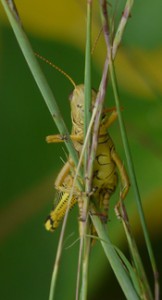 In September, the females bury their eggs into the ground. A female will use its abdomen to “drill” into the ground and lay its eggs. After egg laying the adults die, and the eggs remain in the ground through the winter. The eggs hatch in the spring, the nymphs grow through the summer and develop into an adult by mid July. In 2009, there was very little rain before the eggs hatched and the grasshopper population was higher in the summer. However, if there are early spring rains, many eggs will be washed out and not hatch, causing the population in the summer to be lower.
In September, the females bury their eggs into the ground. A female will use its abdomen to “drill” into the ground and lay its eggs. After egg laying the adults die, and the eggs remain in the ground through the winter. The eggs hatch in the spring, the nymphs grow through the summer and develop into an adult by mid July. In 2009, there was very little rain before the eggs hatched and the grasshopper population was higher in the summer. However, if there are early spring rains, many eggs will be washed out and not hatch, causing the population in the summer to be lower.
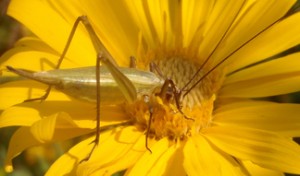
Bush crickets are seldom seen, but their call is one of the main sounds that is heard in the weeds during August and September. Bush crickets eat flowers, leaves and small fruits. The female lays her eggs in the soft wood of a plant stem. The larvae hatch in the following spring.
Spiders
One of the predators in the weeds is the orb weaver or garden spider. This spider makes beautiful circular webs. Orb weavers are brightly colored and large. They stay close to their web and wrap up with silk any insect that flies into it. Garden spiders have an important job in the weeds because they keep the populations of flying insects and grasshoppers in check. In September, orb weavers make a new web each night.
Crab spiders are small spiders found on blooming flowers. Crab spiders ambush unsuspecting pollinators like bees, flies and butterflies that land on the flower. They do not make a web, but rely upon their ability to hide on a flower and not be seen by potential prey. Crab spiders can change color between white and yellow depending upon the color of the flower it is on. Crab spiders are so named because they resemble crabs and can move backwards and sideways.
The daddy-longlegs or harvestmen are closely related to spiders, but not true spiders. They have long flexible legs. They make their living in the weeds, ambushing small insects and eating decomposing plant and animal material. Birds, frogs, and other spiders feed on daddy-longlegs. To protect themselves they will “play dead” when attacked by a predator. To confuse a predator, they can detach a leg which moves in one direction, while they escape going in another direction.
It is believed by many that the daddy long-legs is poisonous to humans. However, they have a small mouth and short fangs which may not be able to penetrate the skin. There are very few records of daddy long-legs biting humans.
Wolf spiders are the largest spiders in Minnesota, getting over an inch in size. They have eight eyes in three rows and depend upon sight to locate food. They can move quickly to chase down prey, or wait for long periods of time for potential prey to pass by. Female wolf spiders carry their eggs with them. After hatching, the young will attach themselves to the abdomen of their mother.
Flies
Flies play an important role in the weeds because many of them, like the bee fly, are pollinators. Bee flies “mimic” honey bees to discourage predators from attacking them (even though they have no stinger). Bees fold their wings when they are resting while flies leave their wings out. Bees have four wings, while flies only have two wings.
Deer flies are most active in July. They have a painful bite and can turn a summer hike into a nightmare. The female deer fly feeds on mammal blood, the male collects pollen. The female has a knife- mandible (mouth) that cuts into its prey.
Robber flies are predators, who also live in the weeds. These are very aggresive flying insects, who attack many types of flying insects including bees, wasps, horse flies, and beetles. A robber fly will wait for its prey on a perch, then fly out, attack and kill its food in mid-air by sticking its mouthparts into the back of the prey and injecting it with a fluid. The robber fly will then take its prey back to its favorite perch and suck out the insides of the insect.
Resources used for this program
Nikula, Blair. Stokes Beginner’s Guide to Dragonflies and Damselfies. Boston, MA. Little, Brown & Company, 2002.
Gilbert, Jim. Through Minnesota’s Seasons with Jim Gilbert. Chanhassen, MN. Minnesota Landscape Arboretum, 1987.

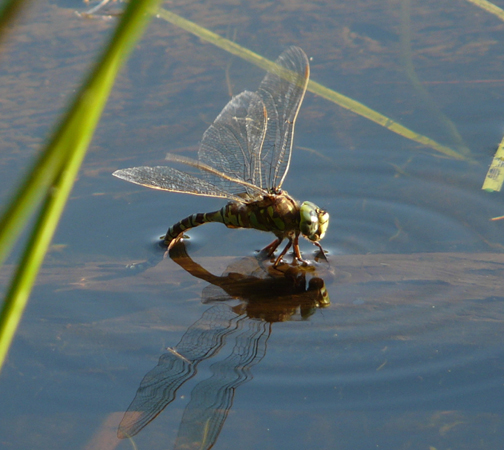
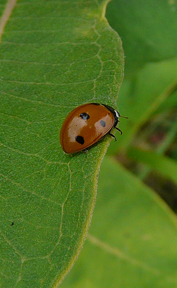
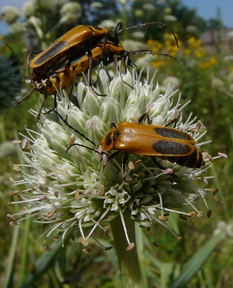
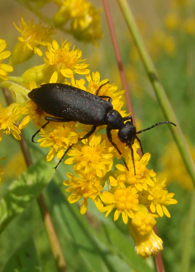
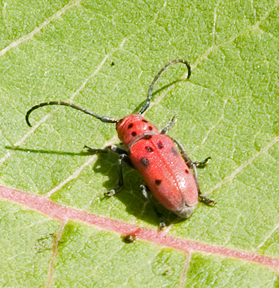
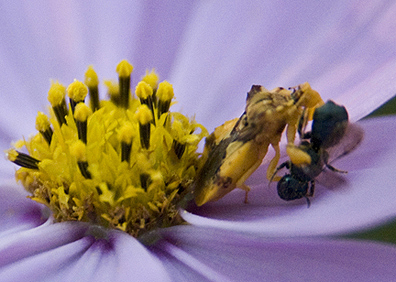
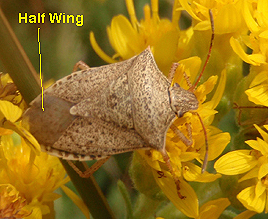
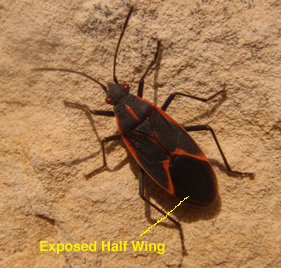
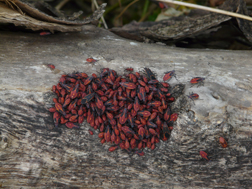
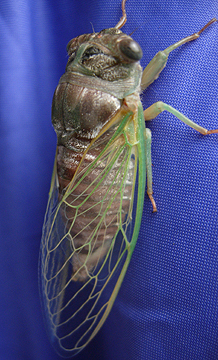
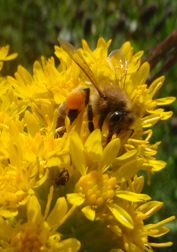
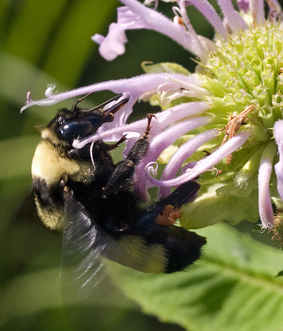

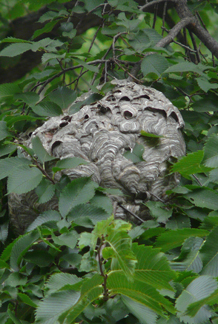
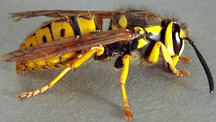
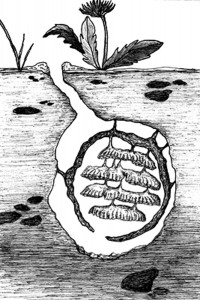
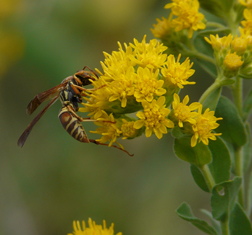
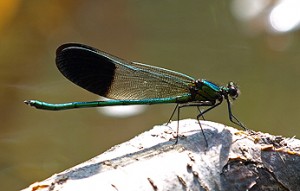
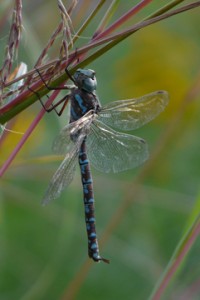
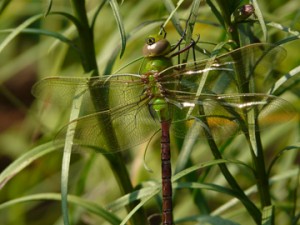
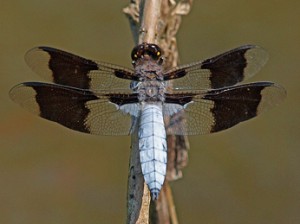
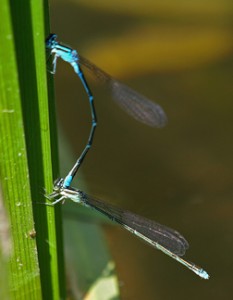
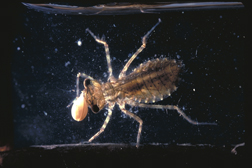
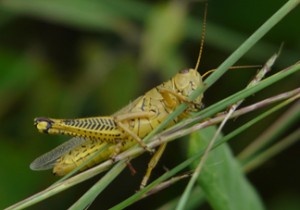
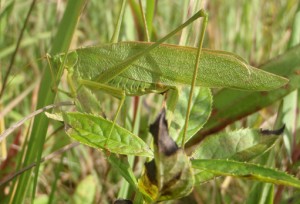
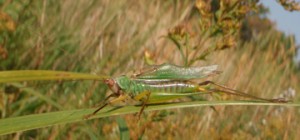
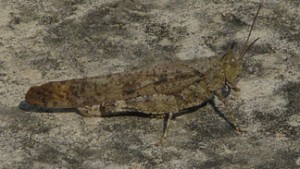

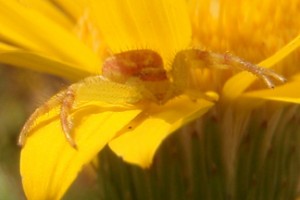
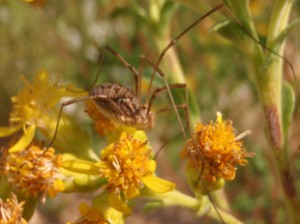
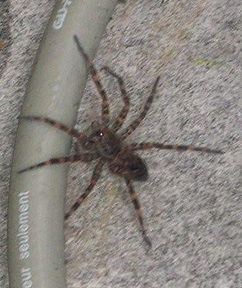
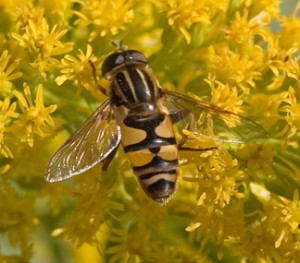
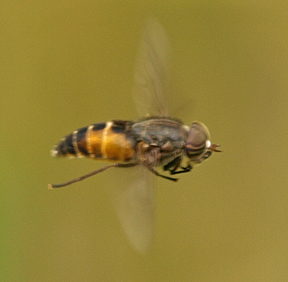
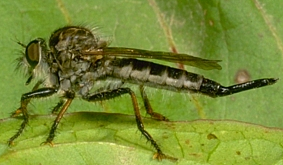



What bug is heard so often in movies at night, usually a drama or detective movie and sounds a little like this…..”kirk, kirk, kirk, kirk, kirk”? And the speed they go depends on the Temperature. It’s NOT the ordinary house or around the house black cricket….as those try to imitate this extraordinary bug, which appears to be smallish & green. They are in “special” locations like a big clump of weeds along the dirt roads and/or out of the way places in bushes in peoples yards … always in bushes or weeds. My parents & I have always called them “Kirk Kirks” 🙂
Thank you for your time & consideration! I REALLY would love to know….. (there’s zillions of insects I hear & amazed at & don’t know what they look like! …OR their names!! There’s “Quirk?”, this one walks a ways down a sidewalk or from bush to bush and goes Quirk?, Quirk? & there are the “Salt & Pepper shaker” Bugs! Well, I could go on & on …. WHO would know these bugs?
Very sincerely
Janice Kucera
I Need the activities of insects during winter .So,Can you guys help me out with this ?
if so ,i thank you